Let’s get something out of the way: I love Springbank. It’s one of my favorite distilleries. It’s also one of the very few distilleries left in Scotland that embodies the “old school”, tradition-laden whiskymaking techniques that marketing departments elsewhere salivate over. Flip through a whisky or wine magazine and you’ll see full-page ad after full-page ad of hardworking bearded men (usually), maneuvering rustic-looking wooden barrels in dirt-floored lichen-walled warehouses, or running golden barley through their bare hands, or stoking a peat fire in a brick oven. Springbank actually does those things.
This can backfire, though. Most of the technological improvements in the whisky industry over the past 100 years have been implemented for the sake of consistency in the resulting whisky. Everything from tree-to-warehouse wood management programs and drum maltings to computerized stills and stainless steel washbacks are primarily meant to guarantee a consistent level of quality in the final bottle (and, sometimes, to cut costs). A distillery that runs without all of these modern crutches is subject to Mother Nature’s whimsy, and can produce sublime never-to-be-repeated nectars as well as skunky garbage. Usually somewhere in between. Here, we have an example of the latter. This bottle costs $100 in the US where all Springbank, Hazelburn, and Longrow (all from Springbank distillery) bottles cost about twice what they ought to (a great reason to order from the UK). And yet, the sample that I opened is completely riddled with sulfur. I will review it on that basis, but know that Springbank 15 from another batch is likely to provide a much better experience. Think of this as a cautionary tale, and always buy your whisky from a reputable merchant who will accept returns when this inevitably happens to you.
The sulfur, by the way, is probably from a bad barrel or batch of barrels that previously held sherry. It is common practice with any barrels that contain wine to “candle” them with sulfur candles. The pungent sulfur dioxide gas disinfects the barrel and prevents the growth of bacteria, mold, and fungi during storage or transportation. Sometimes, the lingering sulfur smell penetrates the wood and affects the whisky during maturation. Advanced barrel management and seasoning techniques can weed out or prevent these “bad barrels”, but Springbank’s old-world methods carry a higher risk of failure, and here we are. The “Avoid” rating reflects this particular bottle, but I will make an attempt to find another sample and update this review in the future.
Nose: Much clearer sherry character than the younger expressions. Here, though, it is heavily sulfurous – of the “rotten eggs” variety – to the point of distraction. There is some typical sooty Springbank peat and doughy malt behind the sherry, but without the stage presence of the 10 year.
Palate: Thin-bodied. Peat-forward, with soot, char, and jam. Hot for 46%. The sulfur peeks through in places.
Finish: Earthy, with charry peat and lingering mixed fruits (Cherry? Berry jam?). Fades with dried cranberries and vague peat.
With Water: Water – God help me – only intensifies the sulfur.
Overall: It’s really hard for me to speak intelligently about this Springbank when the only olfactory memory in my head is that of a composting outhouse I once experienced that smelt strongly of sulfur. You hear of whisky smells transporting you to places and times … that can also work to the detriment of the imbiber, it appears, as I am transported by this whisky back to that one particular outhouse. This is, after hundreds of whiskies, the first time I’ve really been affected by sulfur notes in a whisky. This one is bad, though. I would return this bottle if I had purchased it for any price.


About The Distillery
Springbank is a composite of rarities. It is one of the very few distilleries that performs the entire distillation process from malting on-site (its own floor maltings) to bottling in its private bottling plant. In fact, it is the only fully self-sufficient distillery in Scotland. Located in Campbeltown on the lyrical Mull of Kintyre, it is also one of the few surviving distilleries (of three, with Glen Scotia and Glengyle) from a once-great region of Scotch distillation. In 1887 there were 21 distilleries in Campbeltown, and it was sometimes called “The Whisky City.” Hard times and a self-perpetrated degradation in quality (and thence, reputation) during the American period of Prohibition scoured the region, putting most distillers out of business.Springbank claims that hand-turned floor maltings (as opposed to pneumatic or machine-aerated commercial maltings), while labor-intensive, yield a malt that is better because it germinates more slowly. The distillery uses traditional worm tubs, a cast-iron mash tun, and employs mechanical ‘rummagers’ (to prevent a buildup of burnt deposits) in the copper stills, which are heated with a combination of steam and direct oil fire. Springbank uses three stills to create a 2.8-time (not triple) distillation. Now hold on, because this math is tricky: The first “wash” distillation produces so-called “low wines”, which are around 20% alcohol. A second distillation produces an intermediate distillate, which is in the neighborhood of 35% alcohol. A third still is charged with a solution of 80% of this double-distillate and 20% of the “low wines,” and a third distillation is performed. Thus, in the final spirit, around 80% of the volume has been triple-distilled, while around 20% of the volume has been double-distilled. Hence, 2.8x distillation. Phew! For a fantastic and in-depth guided tour of Springbank distillery, be sure to check out Ralfy’s visit (scroll down).
Springbank also makes Longrow (a peated malt) and (new in 2006) Hazelburn (unpeated, truly triple-distilled). These, along with the distillery’s flagship Springbank bottlings, are all non-chill-filtered, have no caramel coloring, and are reduced to bottling strength on-site with the same water used to produce the whisky. The water, like all Campbeltown whiskies, comes from the Crosshill Loch in the hills above the town, and is supplemented by a private well from a borehole drilled deep into the rock beneath the town. Note that the Springbank “CV” bottling, which is at a similar price-point, is purportedly a vatting of 6, 8, and 12 year-old malts (unverified), from different barrel finishes.
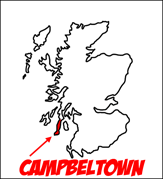



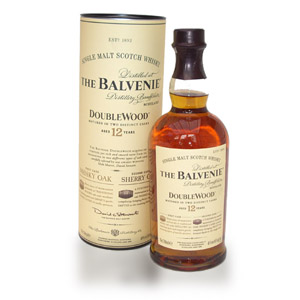
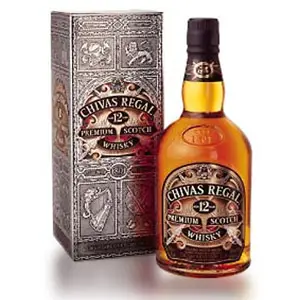
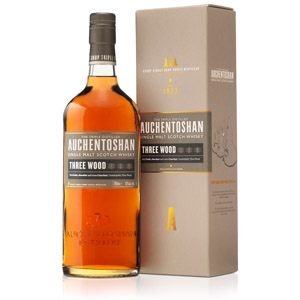
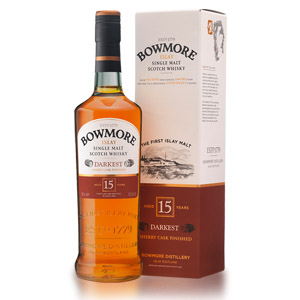

Bummer that you had this experience with SB15. Of the 10, 15, and 18 year, the 15 is my favorite, but my bottle was completely devoid of any sulfur notes. Incidentally, I tried the 18 year via sample from a friend, and it was quite skunky and off putting. Given my undying love for Springbank, I chalked it up to an off batch, like you have here. My old bottle of 15 is long gone, save for the 2 oz I kept back for my samples library (credit to you for that idea, btw) but should I end up with another bottle in my possession in the near future, I will try to contact you to see if you want some sent your way.
Cheers!
If I was so uppity that I would have the tiny Kintyre peninsula designated in the law as a Scotch Whisky producing region, then I would at least try to turn out consistently good Scotch whisky. Just my two cents.
I dunno, man. The two seem pretty unrelated to me.
It’s ridiculous that Campbeltown – home to all of 3 distilleries, two of which are owned by the same people – gets to have it’s own “region”.
That’s a real bummer. I enjoyed a Springbank 15 pour in Las Vegas last January. The combination of smoke, sherry, and malt flavors were wonderful for me and blew the doors off of the tremendously crappy Uggedail I had previously that tasted like young Scotch mixed with cheap. Don’t recall picking up any significant sulphur. It convinced me to by a bottle of the 10 and then the 12 CS. Please give it another try later with a different batch.
Uigeadail is another whisky that is famous for its wide batch variations. My current bottle of Uigeadail is fantastic.
Springbank 15 is among the best whiskies I’ve ever encountered. Once the cool fall days set in, perhaps another review is warranted.